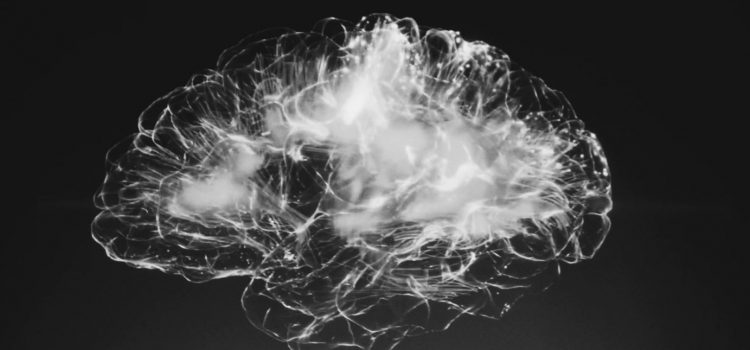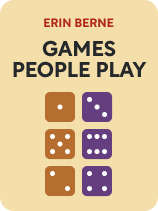

This article is an excerpt from the Shortform book guide to "Games People Play" by Eric Berne. Shortform has the world's best summaries and analyses of books you should be reading.
Like this article? Sign up for a free trial here .
What are the three ego states in transactional analysis? What is the function of each state?
The three ego states, according to Eric Berne’s theory of personality, are the parent, the adult, and the child. None of the ego states are “bad,” per se, but they each have their own function in social situations.
Continue below to learn about Berne’s ego states.
The “Three Ego States” Model of Personality
Let’s look at Berne’s theory of personality. He proposes that three ego states in transactional analysis or distinct states of mind, compose the whole human personality. Consider how you might speak down to a friend who does something dumb. Here, Berne would say, you’re speaking from your “parent” state. The other two states are the adult and the child.
Defining Ego States
Let’s define these in more detail. Berne observes that people display different behaviors depending on the state of mind they’re in. That state of mind corresponds to a particular set of behaviors. For example, productivity habits correspond to the “adult” state of mind (that’s where rational behavior comes from, in Berne’s model). This pairing of mental state and behavioral repertoire is what Berne calls an “ego state.”
In our explanation below, we’ll use P for “parent,” A for “adult,” and C for “child.”
(Shortform note: Berne proposed that each ego state corresponds to a network of neurons in the brain. This distinguishes him from Freud: Where Freud gave no proof for the Id, Ego, and Superego, Berne references the work of Wilder Penfield, a respected neurosurgeon. Penfield found that stimulating small areas of the brain caused patients to vividly relive past experiences, and he inferred that the brain records memory like a tape recorder. Berne took this model of memory and suggested that those “recordings” exist in three clusters—his “ego states.” So when inhabiting an ego state, you express its recordings of emotion and behavior. Penfield’s research doesn’t directly prove Berne’s theory, but it adds more credibility than Freud mustered.)
Each ego state is an internally coherent system: When you’re in mind state A, you’ll only perform behaviors from set A, Berne would say. When you’re in mind state P, you’ll act from set P of your behavioral habits, and so on.
For example, if you’re operating from the child state, you’ll likely joke around and engage in antics (the child’s forte is spontaneous emotion). In contrast, you’ll act more judgmentally when operating from the parent state (morals and values characterize the parent state.)
Each ego state remains relatively segregated from the other two. So if you’re in mind state C, it’s unlikely that you’ll act from behavioral set A. In Berne’s model, the adult, parent, and child don’t overlap.
Take the previous example again—when you’re in a playful mood, you probably won’t erupt in sudden anger. When angry, chances are you won’t want to sing or dance.
Each ego state contributes unique strengths to a healthy personality. Berne argues that each of the three states serves its own functions, and together they compose a complete personality. For example, the adult handles rational decisions, while the child provides spontaneity and excitement.
Let’s look more closely at where each state comes from and what they contribute to the personality.
Shortform Commentary: From Freud to Berne to Fodor
Berne’s ego states seem to parallel Freud’s tripartite model of the psyche. Freud held that the psyche (or personality) is composed of the Id (unconscious, animalistic urges), the Ego (the conscious mind), and the Superego (morality according to parental influences). Berne’s model is similar yet distinct, dividing the mind into three parts with discrete functions. In each section below, we’ll trace the parallels with Freud’s model, and note the differences.
Early psychologists’ idea to break down the mind into component parts also seems to precede the modular theory of the mind, first proposed by Jerry Fodor in 1983. The modular theory holds that the mind is made up of various “mental modules,” and they operate separately from each other (they call this encapsulation,) a phenomenon that Berne intuited with his notion of ego state segregation.
But the modular theory goes further: There are numerous proposed modules, with functions ranging from language processing (Wernicke’s area and Broca’s area) to visual processing. In addition, Fodor didn’t believe that modules were responsible for higher-level cognitive processes, like rational thought—which Berne attributes to the adult ego state. It’s also unclear whether beliefs affect mental modules à la Fodor. Take the Muller-Lyer illusion, below:
Even if you know that the lines are the same length, they still appear to be different. Based on this, theorists argue that beliefs do not affect mental modules. This differs from T.A., wherein a key stance is that beliefs underpin behaviors, thus are part of ego states. It’s possible that ego states are higher-level neural structures, while modules are lower level structures. The conscious “self” or personality could then emerge from lower-level neural functions.
The Adult
Origin: Each of us, Berne asserts, has a fully formed adult ego state within us—even when we’re still children. He observes that anyone, including children and the mentally ill, can act objectively under the right circumstances (though he doesn’t say what those are.)
Functions: The adult is your rational self. It activates when you need to act objectively. It generally corresponds to healthy, intellect-based adult functioning.
For example, the adult comes online when you need to do your taxes. Researching your deductions, calculating quarterly amounts to set aside, and budgeting monthly expenses are rational, objective operations. In Berne’s model, your adult does this work.
According to Berne, the key to a healthy personality is to bring the adult into steady control. As the source of reason, it can moderate the impulsive child and the often overbearing parent.
(Shortform note: Berne’s “adult” seems to parallel Freud’s Ego. Just as the Ego mediates between the Id and the Superego, the adult keeps the parent and child in line. Both also handle rational functions, like a cost-benefit analysis for an important business decision. Yet they differ in that Freud believed that “The Ego is not sharply separated from the Id; its lower portion merges into it…”—in other words, the Ego and the Id mix together. They interact like this: The Ego’s job is to fulfill the Id’s instinctual desires, like needs for food and sex, in a socially appropriate way. In contrast, Berne argues that the ego states are sharply segregated from one another—the child might grab control from the adult, but they remain distinct entities.)
The Parent
Origin: As we grow up, we’re shaped by our cultures. Your parents, peers, and society pass down to you myriad ways of thinking, feeling, and acting—table manners, social etiquette, and so on. You inherit views on what’s good and bad, what you should and shouldn’t do; you learn a worldview and how to act in accord with it.
This is where your parent ego state comes from: the influences of culture, tradition, and your own family elders. You internalize them, and they become a part of you.
Functions: When you act from your inner parent, you behave as your parents would’ve. This part of your personality, Berne holds, knows how to raise a family. It also handles the routine aspects of life—like how you eat, how you spend free time, and how you work. You inherit all of these, and they’re habitual (read: automatic) by the time you’ve grown up.
Imagine that you’ve just adopted a puppy, and she pees on your shoes. Whether you scold her, comfort her, or try to discipline her, your habitual response comes from your parent state—from how your own parents would’ve acted.
Similarly, how you start your day, handle chores, and manage meals comes largely from your parents. So we’d say, “you’re acting from your parent” in those areas of life.
(Shortform note: Since Berne’s time, researchers have identified the phenomenon of automaticity—unconscious enacting of various habits. Berne seems to have anticipated this with his idea that the parent automates life routines. It’s true that children model heavily on their parents and other influences. All those inherited habits then become automatic through long repetition. Think—did you consciously develop your mannerisms, your way of carrying yourself—or did they just happen? It may be that we’re less aware of our default emotional habits than we’d like to think. After all, automaticity makes behaviors unconscious—so aspects of our personalities that we take for granted, like a passive attitude toward conflict, may actually be habits formed in early childhood.)
The Child
Origin: Each of us, Berne states, retains traits that we developed in childhood. These traits develop out of significant early experiences, like a best friendship or being bullied in school. Through such experiences, we form deep emotional impressions about how the world works. For example, we learn how to relate to authority or where we stand on the social ladder, and those early adaptations shape who we become.
Berne doesn’t mention any specific traits—they seem to vary depending on your unique experiences. For example, if you spent early childhood adventuring in the woods with your best friend, you’d probably develop a strong sense of independence and the ability to find your own path.
Functions: Berne states that the child is the source of your intuition and creativity. It can be impulsive, expressing spontaneous positive or negative emotion. He doesn’t go into more detail than this, except to say that it’s the most valuable part of the personality.
For example, when your favorite song gets you singing or dancing, or when you’re laughing at a joke only you get, that’s your child expressing itself. In contrast, your child may also lash out in fear when threatened. The child’s key trait is spontaneity, regardless of the emotion expressed.
| The Child and the Id Here again, Berne loosely follows Freud’s footsteps. Like Freud’s Id, the child is a source of unconscious drives, giving rise to all sorts of emotionally impulsive behaviors. And a child out of control can cause unconstructive behavior, just like the urge-driven Id. However, they differ in that Berne takes a much more positive view of this largely unconscious, emotional aspect of the psyche. He sees the child as deeply valuable, giving us our creativity and love of life, whereas the Id is more like a blind, instinctual animal. In the elephant and rider metaphor, the Id is the elephant: A feeling-driven animal that seeks pleasure and avoids pain. But Berne’s child doesn’t fit that model—it’s more about emotional expression, like spontaneous joy or anger, than animal needs. (Related, our guide to Switch discusses strategies to leverage your emotional side—like envisioning tangible destinations and celebrating milestones—to reach success.) Early Experiences Shape Our Later Lives Recent research does support Berne’s claim that early experiences shape our adult personalities. Birth order, early emotional wounds, and poor adaptation to negative role models all carry over into our adult lives. Unless we address these, we can continue to operate from a damaged childhood mindset in our adult lives; much of Berne’s work was to find these dysfunctional adaptations and change them. |

———End of Preview———
Like what you just read? Read the rest of the world's best book summary and analysis of Eric Berne's "Games People Play" at Shortform .
Here's what you'll find in our full Games People Play summary :
- The many ways that we relate to one another through “games”
- Why you might be missing out on the fulfillment of game-free living
- How to identify and overcome unhealthy games






